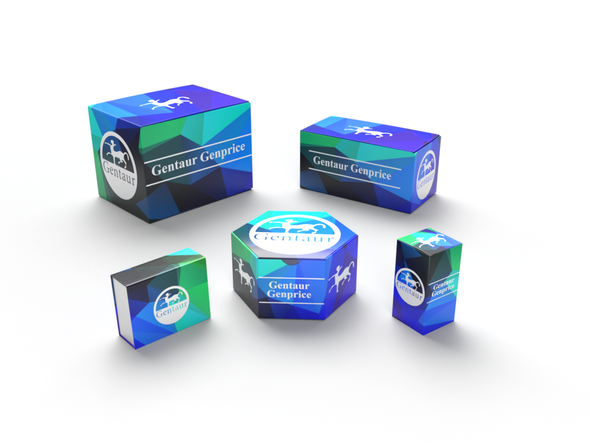740
Human Basic salivary proline-rich protein 2 (PRB2) ELISA Kit | AE26125HU
- SKU:
- 740-AE26125HU
- Availability:
- Usually ships in 5 working days
Description
Human Basic salivary proline-rich protein 2 (PRB2) ELISA Kit | AE26125HU | Gentaur UK, US & Europe Distribution
Species Reactivity: Human (Homo sapiens)
Abbreviation: PRB2
Alternative Name: PRPPRB1; Ps; cP7; proline-rich protein BstNI; subfamily-2 (parotid size variant) |salivary proline-rich protein 2
Application: ELISA
Range: 1.56-100 ng/mL
Sensitivity: 0.59 ng/mL
Intra-Assay: ≤4.7%
Inter-Assay: ≤8.3%
Recovery: 1, 06
Sample Type: Serum, Plasma, Other biological fluids
Detection Method: Sandwich
Analysis Method : Quantitive
Test Principale: This assay employs a two-site sandwich ELISA to quantitate PRB2 in samples. An antibody specific for PRB2 has been pre-coated onto a microplate. Standards and samples are pipetted into the wells and anyPRB2 present is bound by the immobilized antibody. After removing any unbound substances, a biotin-conjugated antibody specific for PRB2 is added to the wells. After washing, Streptavidin conjugated Horseradish Peroxidase (HRP) is added to the wells. Following a wash to remove any unbound avidin-enzyme reagent, a substrate solution is added to the wells and color develops in proportion to the amount of PRB2 bound in the initial step. The color development is stopped and the intensity of the color is measured.
Product Overview: The Ps proteins of saliva are so called because they are parotid size variants, i.e., variants in the size of parotid salivary protein. The polymorphism is determined by 1 unexpressed and 2 expressed alleles at an autosomal locus. The electrophoretic polymorphism is manifested by apparent differences in molecular weights between the Ps proteins which are glycosylated. Ps and Pm are closely linked to Pr, Pa, Db, and G1. Goodman and Karn (1983) presented evidence supporting the conclusion of Azen and Denniston (1980) that there is a molecular weight difference between the 2 allelic proteins Ps-1 and Ps-2. The difference appears to be due to an extension of the Ps-2 chain (presumably at its COOH-end) . Minaguchi et al. (1988) described new variants.
Stability: The stability of ELISA kit is determined by the loss rate of activity. The loss rate of this kit is less than 5% within the expiration date under appropriate storage condition. The loss rate was determined by accelerated thermal degradation test. Keep the kit at 37°C for 4 and 7 days, and compare O.D.values of the kit kept at 37°C with that of at recommended temperature. (referring from China Biological Products Standard, which was calculated by the Arrhenius equation. For ELISA kit, 4 days storage at 37°C can be considered as 6 months at 2 - 8°C, which means 7 days at 37°C equaling 12 months at 2 - 8°C) .






